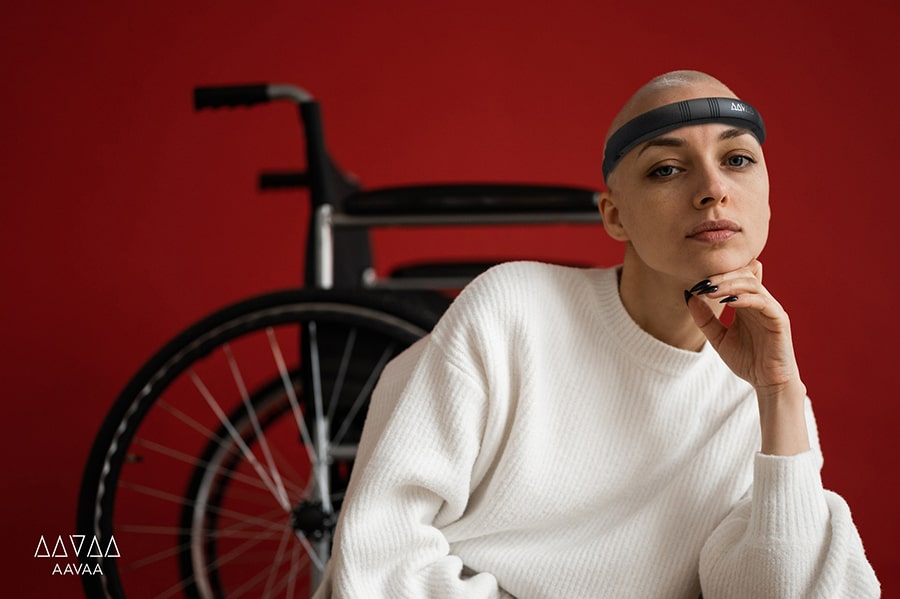Pioneering assistive headband that acts as a “head mouse” can integrate with wide range of tech

A wearable headband’s software that enables people to uses intentional movements like blinks, winks, and eye gazes to control devices can now be easily integrated with a wide array of technologies, applications, and hardware.
AAVAA, an innovator in brain-computer interface (BCI) technology, has unveiled its AAVAA Headband Accessibility Developer’s Kit that allows firms to integrate AAVAAA’s software with their own technologies to expand user accessibility options.
The AAVAA Headband is designed to give individuals with disabilities full control over their devices to transform everyday life. It acts as a “head mouse” and decodes a user’s auditory and visual attention, alongside their intent and subtle commands, such as blinks, winks and eye gazes.
This means users can control devices, such as phones, tablets, or assistive devices with movements like a blink, making it a functional technology for users without motor function.
“BCI technology is the key that unlocks so much potential within the accessibility space,” said Naeem Komeilipoor, founder and CTO of AAVAA. “This technology will enable paralysed people to control their wheelchairs and operate their computers and phones so they can communicate and function in our modern world.
“Beyond that we’re finding incredible applications for this new technology – it’s solving the “Cocktail Party Problem” by improving hearing challenges, creating the controller of the future for AR/VR environments and even changing how astronauts function in space.”
The new AAVAA Headband Accessibility Developer’s Kit claims to offer intuitive gesture control, allowing users to effortlessly interact with their devices through various intentional eye, mouth, hand, and eyebrow movements. It offers a customisable interface, so users can personalise their experience by adapting form factors, gestures, and gesture intensity to cater to specific accessibility needs.
Moreover, the kit’s B2B device integration capability facilitates smooth incorporation with a wide array of technologies, applications, and hardware, supporting accessibility and enhancing everyday consumer devices. B2B device integration costs are evaluated on a case-by-case basis, AAVAA told AT Today.
Naeem added: “We’ve listened closely during end-user testing and identified gaps in current BCI technology. Our new software excels in controlling multiple complex devices, decoding intentional and unintentional movements and commands. Our goal is to provide a simplified control device that efficiently and accurately decodes commands, replacing the multitude of cumbersome devices relied upon by those with mobility impairments.”
The AAVAA Headband is now available for trials here. Interested individuals can fill out a request form, where they can see a live demonstration and request to try the headband themselves. This assistive technology is available in the UK as well as internationally.
A recent report from ATech Policy Lab details how to raise mainstream awareness among frontline professionals of the potential of assistive technologies to transform the lives of millions of disabled people. Read it here.

